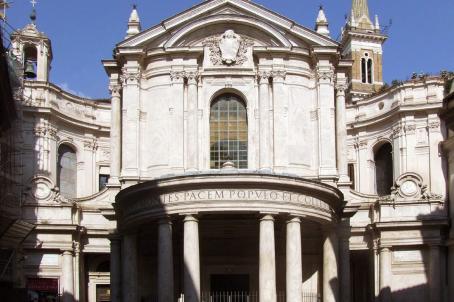Chiesa di Sant'Agnese in Agone

The church of Sant'Agnese in Agone was built on the spot where, according to tradition, Agnes of Rome, exposed naked to the public, was miraculously covered by her hair. After the oratory, built in the 7th century, the church was built over it in baroque style by the architects Girolamo and Carlo Rainaldi in 1652 at the request of Pope Innocent X and the noble family of Pamphili. The church was completed between 1653 and 1657 by Francesco Borromini. He designed the concave façade of the church and topped it with a dome and two campaniles.





